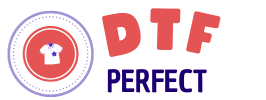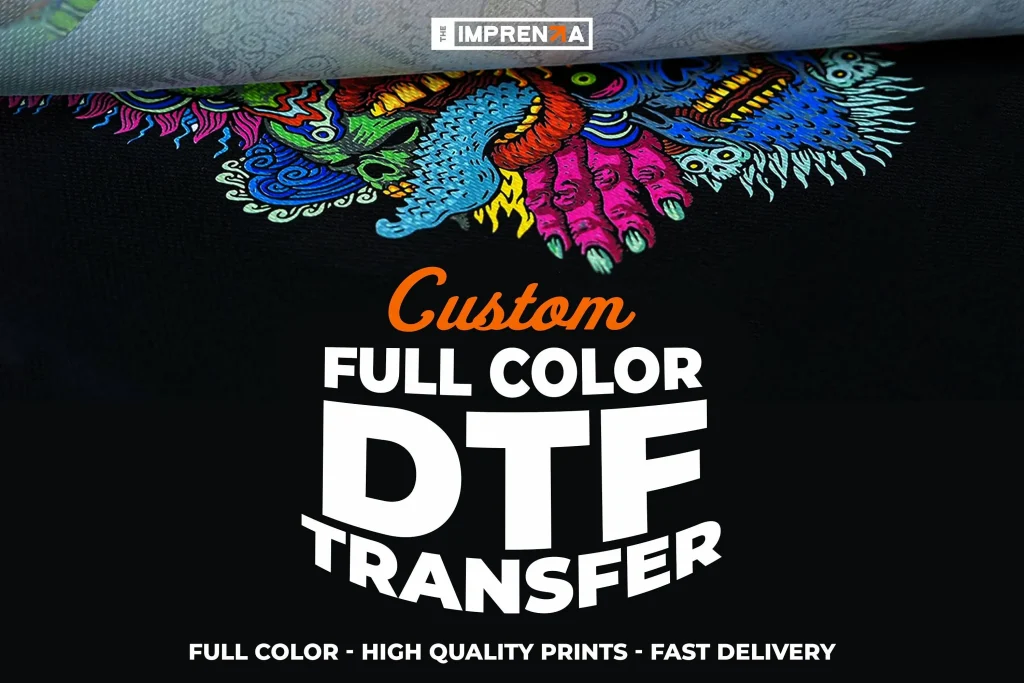DTF Transfers, or Direct to Film transfers, are revolutionizing the custom apparel market by offering an innovative solution for personalized clothing. This cutting-edge DTF printing technology allows for vibrant, high-quality designs to be printed directly onto films before being heat-pressed onto garments, allowing for intricate, colorful custom T-shirts and more. As consumer demand for unique fashion statements surges, DTF transfers facilitate a seamless print-on-demand process, empowering small businesses to implement cost-effective production strategies without sacrificing quality. By combining flexibility and durability, DTF technology is quickly becoming the preferred method for creating custom apparel that stands out in a crowded marketplace. Discover how leveraging these direct to film transfers can elevate your fashion aspirations to new heights!
In the ever-evolving landscape of personalized clothing, the utilization of direct-to-film techniques is gaining momentum among entrepreneurs and designers alike. Also known as DTF printing, this advanced method enables the creation of custom apparel with unmatched design precision and resilience. By transferring vibrant images directly onto various fabrics, businesses can offer a diverse range of products, including bespoke T-shirts and accessories that resonate deeply with consumers. The ability to print on demand aligns perfectly with contemporary consumer preferences, fostering a marketplace that thrives on individuality and sustainability. As this trend accelerates, exploring the potential of direct to film solutions may just be the key to success for those looking to make a mark in the custom apparel industry.
What is DTF Printing Technology?
DTF printing technology, or Direct to Film printing, is revolutionizing the custom apparel industry by allowing intricate designs to be printed in vibrant colors directly onto a film, which can then be transferred to various types of fabrics. This innovative method stands out from traditional printing techniques like screen printing due to its ability to create multicolored and detailed designs without requiring multiple screens. With DTF technology, designs are first printed on a special film using high-quality printers, followed by the application of a powdered adhesive to ensure durability during washing and wearing.
As the demand for custom apparel rises, particularly among younger generations seeking unique fashion statements, DTF printing emerges as an efficient solution for businesses wanting to offer personalized clothing options. This technology not only accommodates a wide range of fabric types, but it also presents opportunities for print-on-demand services. As such, small businesses and individual designers can produce small batch runs without significant upfront costs, making it easier to enter the competitive custom apparel market.
Advantages of Using DTF Transfers in Custom Apparel
DTF transfers present several advantages that make them an appealing choice for custom apparel production. One of the most prominent benefits is their cost-effectiveness, especially for small to medium-sized enterprises. Unlike traditional screen printing, which can become costly due to setup fees and minimum order quantities, DTF technology allows for on-demand printing. Businesses can fulfill customized orders as they come, reducing waste and inventory costs, while also offering customers more variety in their selections.
In addition to being cost-effective, DTF transfers excel in versatility. They can be applied to various fabric types, including cotton, polyester, and blends, allowing designers to diversify their product lines without switching printing methods. This flexibility makes DTF an ideal choice for businesses aiming to cater to the eclectic tastes of modern consumers who expect high-quality, custom designs that can be applied to everything from T-shirts to hoodies and beyond.
The Growing Popularity of Custom T-shirts with DTF Transfers
The trend of custom T-shirts is gaining momentum, particularly as consumers look for apparel that reflects their personal style and identity. DTF transfers have significantly contributed to this trend, allowing for full-color prints that are both eye-catching and durable. With the rise of e-commerce and print-on-demand services, individuals can now easily obtain custom designs that are printed using DTF technology, leading to a surge in demand for uniquely designed T-shirts.
Moreover, the accessibility of DTF printing methods means that entrepreneurs can start T-shirt businesses with minimal investment. By leveraging the power of DTF technology, they can offer a variety of designs and sizes, creating a diverse inventory that keeps customers engaged. Social media platforms have further fueled the popularity of custom T-shirts, as users showcase their unique designs, leading to a growing consumer demand for custom apparel.
Eco-Friendly Practices with DTF Printing
With sustainability becoming a pressing concern for consumers, DTF printing technology offers eco-friendly options that align with the ethical practices sought by today’s market. Many DTF inks are water-based and free from harmful chemicals, making them a safer choice for both the environment and garment workers. This shift towards eco-friendly solutions not only appeals to conscientious consumers but also enhances brand reputation for businesses that adopt green practices.
Additionally, the DTF process minimizes waste and promotes on-demand production. By allowing businesses to create items only as they are ordered, companies can significantly reduce overproduction and leftover stock—a common issue within the fashion industry. By embracing DTF technology, brands can position themselves as environmentally conscious, appealing to a growing demographic that values sustainability in their purchasing decisions.
Recent Innovations in DTF Printing Technology
The landscape of DTF printing technology is rapidly evolving, with recent innovations enhancing efficiency and accessibility for businesses. One significant advancement is the introduction of compact A3 DTF printers, which allow smaller businesses to tap into the print-on-demand market without the need for extensive startup costs. These printers enable quick turnaround times for custom orders, making it easier for businesses to respond to trends and consumer demands.
Moreover, advancements in adhesive powders and ink formulations have improved the quality and durability of DTF transfers. Businesses can now produce higher quality prints that withstand multiple washes without fading or cracking. This reliability reinforces consumer trust and satisfaction, which is crucial for maintaining loyalty in the competitive custom apparel market.
Future Market Trends for Custom Apparel and DTF Technology
As the custom apparel market continues to grow, DTF technology is expected to play a pivotal role in shaping future trends. With consumers increasingly seeking personalized and unique clothing options, DTF transfers provide the flexibility and quality needed to meet these demands. Market analysts highlight a significant shift towards customization, driven by advancements in DTF technology that allow for quicker production times and greater design flexibility.
Looking ahead, small businesses and independent designers who harness DTF printing technology are well-positioned to thrive. The combination of innovative printing methods, a focus on sustainability, and the capacity for on-demand services will empower these enterprises to compete against larger brands. This democratization of fashion production means creative entrepreneurs can shape the custom apparel landscape while catering to a diverse clientele that craves individuality.
Frequently Asked Questions
What are DTF transfers and how are they used in custom apparel?
DTF transfers, or Direct to Film transfers, are a cutting-edge printing technology used to create custom apparel. This process involves printing designs onto a special film, applying an adhesive powder, and then heat pressing it onto garments. DTF transfers allow for vibrant colors and detailed designs on a variety of fabrics, making them a popular choice for custom T-shirts and other apparel.
Why should I choose DTF printing technology over traditional methods for custom apparel?
Choosing DTF printing technology for custom apparel offers several advantages over traditional methods. DTF allows for high-resolution prints with multiple colors on a single film, eliminating the need for separate screens like in screen printing. This not only reduces setup costs but also allows for small production runs, making it cost-effective for businesses looking to create print on demand.
Are DTF transfers durable and wash-resistant for custom T-shirts?
Yes, DTF transfers are renowned for their durability and wash resistance. The printing process ensures that designs can withstand multiple washes without fading, cracking, or peeling, which is crucial for maintaining the quality of custom T-shirts and other apparel. This longevity helps businesses build customer loyalty and satisfaction.
What types of fabrics can DTF transfers be applied to in custom apparel production?
DTF transfers are versatile and compatible with a wide range of fabrics, including cotton, polyester, nylon, and blends. This adaptability enables businesses to offer a diverse selection of custom apparel options, catering to varying customer preferences and fabric choices.
How does DTF printing contribute to sustainability in the fashion industry?
DTF printing contributes to sustainability in the fashion industry by offering eco-friendly options, such as using water-based inks and materials. This aligns with the growing consumer demand for ethical and environmentally conscious practices in custom apparel production, allowing brands to appeal to a more conscientious market.
What recent advancements have improved DTF technology for small businesses?
Recent advancements in DTF technology, such as the introduction of compact A3 DTF printers, have made it easier for small businesses to enter the custom apparel market. These innovations streamline the printing process and reduce costs, enabling entrepreneurs to produce custom items like T-shirts and tote bags without complex setups or heavy investments.
| Key Point | Description |
|---|---|
| Understanding DTF Transfers | DTF transfers allow vibrant, high-quality prints using a film transfer process, making it an effective alternative to traditional printing methods. |
| Advantages of DTF Transfers | 1. Cost-Effectiveness: Low production costs for small batches. 2. Versatility: Works on various fabric types. 3. Quality and Durability: Vibrant colors that withstand washing. 4. Eco-Friendly Options: Use of sustainable materials and inks. |
| Recent Developments | The launch of compact A3 DTF printers has made the technology more accessible to small businesses. |
| Market Trends | Increasing demand for custom apparel, led by personalization and the rise of on-demand solutions. DTF technology promotes creativity with lower upfront costs. |
Summary
DTF Transfers are revolutionizing the custom apparel market by providing an efficient and creative printing solution that aligns with the current consumer demands for personalized and sustainable fashion. As the fashion industry continues to embrace innovation, the versatility and cost-effectiveness of DTF technology enable small businesses and designers to stand out in a competitive landscape. By leveraging DTF Transfers, entrepreneurs can create high-quality, durable prints that cater to a diverse market, fostering customer loyalty and satisfaction. Embracing this cutting-edge technology now can pave the way for a successful future in the world of custom apparel.



